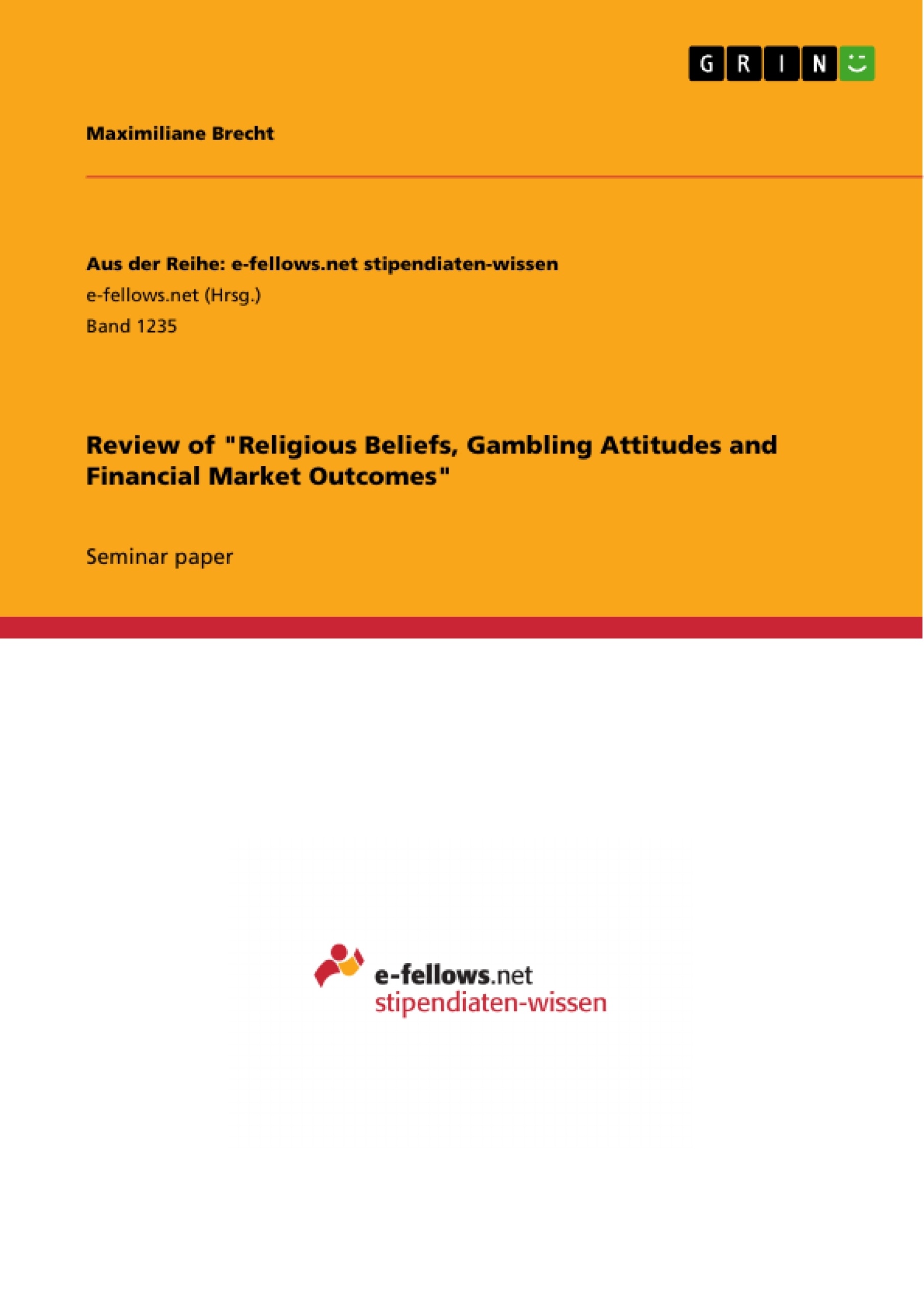As religious faith plays a crucial role in people’s lives and largely influences their behavior as well as their decision making, the study of religiosity has a long tradition in many social science disciplines. Nevertheless, this relationship became only a topic of interest in modern economic studies since the last quarter of the twentieth century, when Ehrenberg and Azzi (1975) developed a utility-maximizing model taking into account both lifetime and afterlife utility (see, for example, Iannaccone, 1998; Jackson and Fleischer, 2007). In 2012, around 91% of the US American population professed to ”believe in God or a universal spirit” (Lugo, 2012), suggesting that if religion does shape economic behavior, it should also affect aggregate market outcome. Hence, studies investigate both microand macroeconomic effects of religiosity 2 , while some recent papers specifically address the relationship between religion and financial decisions: risk aversion and speculative behavior in particular are believed to depend on religious adherence. Not only have studies linked religiosity with a higher level of pure risk aversion in corporate decision making (Hilary and Hui, 2009), but also suggests current research that religious beliefs spill over in investment decisions due to different notions of gambling. For instance, Kumar (2009) found Catholics to be more willing to take on speculative risk by investing more in risky stocks than Protestants do. This paper aims to critically review Kumar, Page, and Spalt (2011) and structures as follows: firstly the theoretical framework of gambling in economics will be presented with a focus on cumulative prospect theory and its implications for asset pricing. Then follows a comprehensive overview of the theoretical background and empirical findings of the paper with focus on the influence of religion on investors’ portfolio decisions and on overpricing of initial public offerings. The subsequent section discusses the hypotheses of Kumar, Page, and Spalt (2011). Eventually, the last section concludes with a summary of the main findings in a broader context and with an outlook on future research.
Contents
1 Introduction
2 First insights into gambling in financial markets
2.1 Cumulative prospect theory
2.2 Asset pricing
3 Religious beliefs and gambling propensities
4 Results
4.1 Empirical Analysis
4.2 Investors’ portfolio decisions
4.3 Employee stock option plans
4.4 IPO overpricing and lottery stocks
5 Conclusion
6 Discussion
7 References
- Quote paper
- Maximiliane Brecht (Author), 2014, Review of "Religious Beliefs, Gambling Attitudes and Financial Market Outcomes", Munich, GRIN Verlag, https://www.grin.com/document/300166
-

-

-

-
Upload your own papers! Earn money and win an iPhone X. -

-
Upload your own papers! Earn money and win an iPhone X. -

-
Upload your own papers! Earn money and win an iPhone X. -

-
Upload your own papers! Earn money and win an iPhone X. -

-
Upload your own papers! Earn money and win an iPhone X. -

-
Upload your own papers! Earn money and win an iPhone X. -

-
Upload your own papers! Earn money and win an iPhone X.

